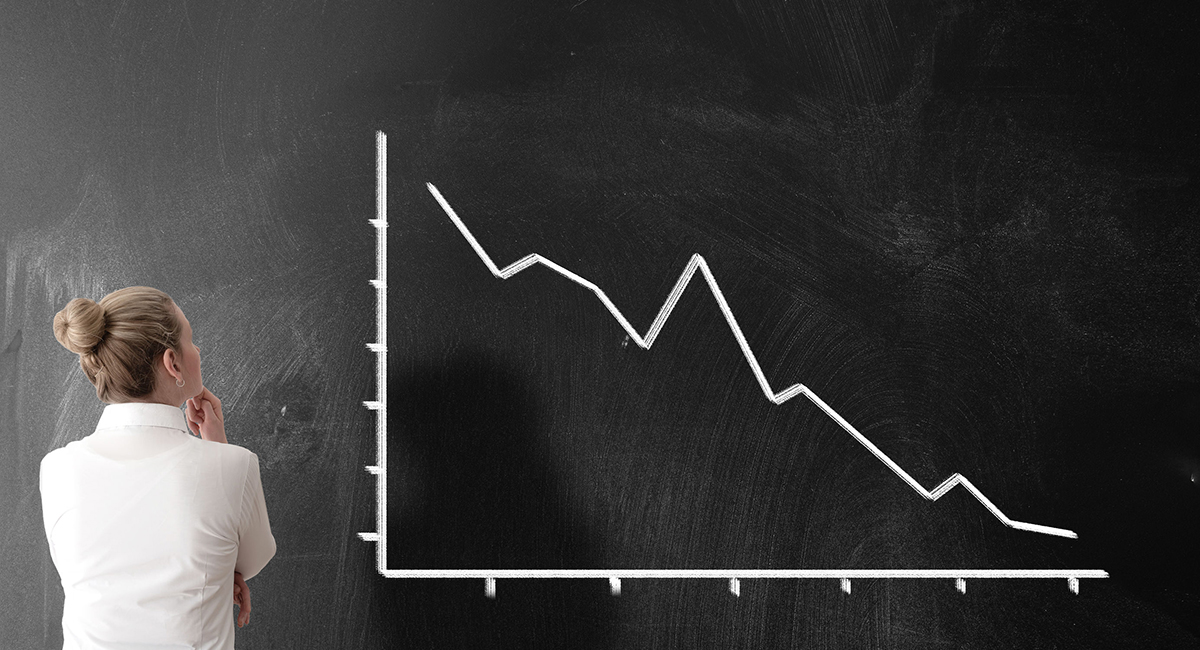Like ancient Rome, American universities have not fallen or declined in a day—or even a year. But as good of a date as any to measure the beginning of the decline is 2011. Enrollments started falling that year and since then they have fallen by roughly 15 percent. The ratio of college students to the total American population has declined even more—around 20 percent.
A decline of this magnitude for this long is unique in American history. Underlying this is a sharp decline in public support for universities. At the beginning of this decline, the primary complaint was over costs—colleges were too expensive. Costs had been rising far faster than not only inflation but, more critically, family incomes. In the three decades before 2010, American families could more readily than ever afford big televisions, cell phones, vacation homes, cruises, and other luxuries—but college education was becoming financially more burdensome. Inefficiencies abound. Unlike in the rest of the economy, productivity in higher education was probably falling as the staff to student ratio rose. Buildings were empty too much of the year, faculty were writing a lot of articles of little consequence for miniscule audiences. Administrative bloat was already well under way. All of this is well before the pandemic beginning in 2020.
But the cost explosion is a minor factor in the big enrollment decline from 2010 to 2020. After all, in the previous decade (2000 to 2010) of rapidly rising tuition fees, enrollments rose robustly—by more than one-third. The single event that did more than anything to trigger the decline came on April 4, 2011 when the U.S. Department of Education in a “dear colleague” letter proclaimed that sexual violence on campus led by horny male students was a national problem, mandating remedies making a mockery of traditional Anglo-Saxon procedures of adjudicating wrongful behavior (e.g., no right to cross examine witnesses, prosecutors often serving also as judges or the equivalent). By 2015, these procedures were widely adopted.
The result? An exodus of men from campuses. Between 2015 and 2020, enrollment fell by nearly one million students with 87 percent of the decline being men. College student affairs offices, responding robustly to the Department of Education fatwa, declared a war on men as they administered Star Chamber justice.
An even more sinister university bureaucracy exploded roughly simultaneously, “diversity, equity and inclusion” (DEI) offices. These offices have declared that justice demands that students swear fealty to a “diversity” agenda that evaluates students mainly on race, with a secondary aim at giving favorable status to gays, transgender students and others adjudged disadvantaged by the DEI bureaucracy. The dominant problem today is the fundamental positive rationale for higher education has been imperiled: universities have largely lost their reputation as places for robust debate and consideration of all viewpoints, instead moving towards becoming authoritarian institutions depressingly similar to universities in the old Soviet Union or Nazi Germany. Associated with the new woke supremacy centered around “social justice” has come a decline in academic standards and expectations, with even prestigious selective schools dropping such important tools of assessing applicants as entrance examinations like the SAT. Grade inflation, already excessive endemic even in 2010 continued, with most students at our so-called elite universities getting “A” or “A-” grades. With that has come less time spent on academics.
Parents started asking “why send our kids to radical leftish and expensive schools where there is a good chance they either will not graduate or will end up in low paying jobs? The New York Federal Reserve Bank published “underemployment” statistics showing the vocational risksof pursuing a degree were pretty high. College graduates might average lifetime earnings of one million dollars more than high school graduates—but 40 percent or so of college freshmen do not get degrees in any timely fashion.
To be sure, there are enormous variations between schools—a great strength in our university system. Some schools are decidedly non-woke without typical obsessions over people’s skin coloration, religion or national origin. Others want kids with a strong sense of belief in God and rejection of what they regard as the sins and immorality of modern America.
I am cautiously optimistic that market forces, even weakened by the government subsidized environment of higher education, will lead to healthy change. The ultra-woke schools will be punished—already Harvard’s early admissions applications are down substantially—while traditional institutions emphasizing academics will do better. Reports are appearing that applications and enrollments are robust at some schools promoting traditional academic and sometimes religious values. Falling applications at ultra-woke schools will be accompanied by state governments increasingly attacking the instruments of leftish collegiate domination such as DEI. Private donors will start becoming more demanding while making gifts. One aspect of the revival would be to make college comfortable to males again.
This renaissance of campus sanity could be disrupted by the federal government, already the most single negative factor in modern higher education. An activist Department of Education, largely ignoring legislative intent and constitutional restraints, could impede reforms, joined by allies in the accreditation cartel. The 2024 elections should feature higher education issues more than usual.












